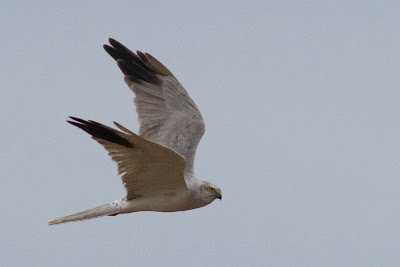What a wonderful place!!!
I spent almost three weeks (2nd
of October to 20th October 2018) at the famous Besh Barmag migration
spot in Azerbaijan. It was an amazing experience for me. Indeed, this spot is one
of the biggest places in the Western Palearctic to count birds. During my stay
here, we counted no less than 771.363 birds and for me it was a total of 183
species that I have seen.
 |
| counters at work |
I will remember this day for
all of my life, the 8th of October with flocks and flocks of herons
(8 species) during the day. It was a great atmosphere at dusk when a group of
63 Little Bitterns raised up of the trees and flew south together with Night
Herons and Great Bitterns. I remember also thousands of Calandra Lark,
Starlings, a big day with 5698 Whites Wagtails (the 6th of October),
some surprises and targets for me like the Oriental Skylark that I have seen
four times, the Siberian Buff-bellied Pipit and a Pallas’s Leaf Warbler, first
for Azerbaijan just before my departure (19th of October) found with
Antony Chaillou just near the spot…. A lot of things like this but I can’t
explain all of them!
A special dedicate to my
friend Gabi staying almost all the season, a very good counter, it was a
pleasure to count with you in particular the flocks of ducks when seawatching,
not easy but for sure together we tried to do our best ! “Bon courage”
I also like to thank the two coordinators, Pia Fetting and Christoph Himmel
for the good organization during my trip, their good mood all the days, very
friendly and for their big engagement for this project, congrats! For sure,
days were better thanks to our cook Miryusif, big thanks to him for the very
tasty food! Finally, I would like to thank all the team, local Azeri staff,
birders, counters, thanks for all!
Good
luck for next counters !
 |
| Red-breasted Flycatcher |
 |
| Black Kite |
 |
| Long-legged Buzzard |
 |
| Imperial Eagle |
 |
| Greater Spotted Eagle |
 |
| Sunrise over the Caspian |























































